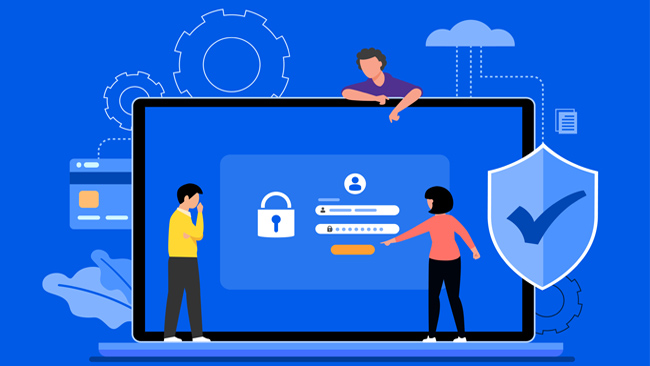Multi-factor authentication (MFA) is an increasingly common security technology that requires the use of two or more credential verification processes to confirm the identity of a user. It can be used in multiple scenarios, like logging in to an online account, using an app, or accessing a virtual private network.
According to recent stats, 62% of large companies and 38% of small and medium-sized companies use multi-factor authentication solutions. Data provided by the US national security cybersecurity chief show that implementing MFA might prevent 80% to 90% of cyber attacks.
While these numbers prove the great contribution this technology can give your organization, they also show that it doesn’t offer a 100% guarantee of protecting your data and processes. In this article, we will discuss other layers of protection that you can add to your security strategy to achieve higher levels of safety.
#1 Implementing a Zero Trust Strategy
You may have already heard of the expression Zero Trust in discussions on cybersecurity. In a Zero Trust architecture, every user must be continuously authenticated for security purposes in order to access data, applications, and locations. This doesn’t just refer to workers located in physical facilities but remote and hybrid personnel too. Adopting a Zero Trust Strategy means abandoning the concept that people and entities that belong to the organization should be automatically trusted. This concept can be very risky as it doesn’t consider the possibility that ill-intentioned or compromised insiders could access and exfiltrate sensitive information.
A comprehensive Zero Trust architecture involves all levels of the organization, from physical infrastructure to software to individuals. It can be reinforced through the use of dedicated solutions, such as digital apps for continued validation of users’ devices or security doors for businesses. Building a Zero Trust architecture requires several steps. First, the organization should introduce strong authentication measures and adopt the least access policies. Second, it must get acquainted with the idea that you can’t trust any individual or application, regardless of their previous record on security, and need to continuously supervise them at runtime in order to validate their behaviors. Third, it must apply Zero Trust principles to every component of the organization, including IoT devices and Cloud infrastructure.
#2 Password Hygiene and Training
The more organizations rely on digital solutions, the more crucial the role of passwords becomes in protecting their data and processes. Password hygiene refers to a set of practices aimed at choosing and maintaining solid passwords to prevent cybercriminals from attacking your system or getting access to your data. Here are some of such practices.
- Choosing passwords that are at least 16 characters long.
- Not using meaningful words or phrases.
- Choosing complex passwords that combine lowercase letters, uppercase letters, numbers, and special characters.
- Not entering your passwords when using public wireless networks, unsecured websites, or sites you were directed to by suspicious emails and texts.
- Changing your password frequently and regularly.
- Not reusing a password you have already used in the past.
- Using a reliable password manager
- Not using one password for different accounts
To achieve full implementation of these strategies, it’s crucial that you teach them to your entire staff. Very often, individual users have to set their own passwords for tools that they use during their work. This also applies to remote employees who work from home but still have access to sensitive company systems, apps, and documents.
#3 Complex MFA Strategies
A multi-factor authentication strategy can be deployed with different levels of complexity. An example of basic multi-factor authentication is logging into your online banking account by inserting a password first and a PIN you received by SMS after. If people with malicious intent were to get hold of your password and cellphone, even for a very short period, they could do irreparable damage to your finances.
In order to maximize the safety of your data and systems, you should aim for more complex MFA strategies. For instance, you could add face biometrics to your multi-factor authentication process. The term refers to facial recognition technologies that can match a digital image of your face against a database that includes the faces of authorized users. An example would be adopting a system that requires both facial recognition and the use of a PIN to access restricted physical spaces, use certain apps, or access sensitive documents. Some enterprise businesses are integrating their cloud surveillance camera system with their access control system to use this feed to validate their employee entries to restricted areas.



Leave a comment
Have something to say about this article? Add your comment and start the discussion.